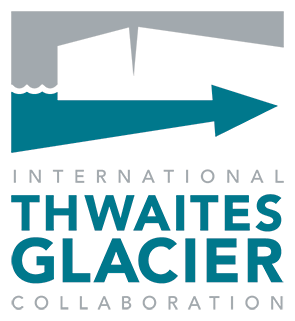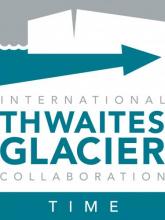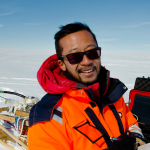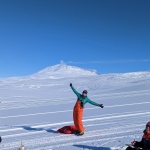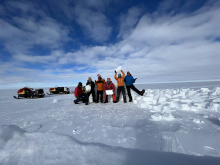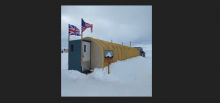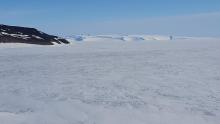Thwaites Interdisciplinary Margin Evolution - The Role of Shear Margin Dynamics in the Future Evolution of Thwaites Drainage Basin (TIME)
TIME is an ice-based project using state-of-the-art geophysical techniques to observe rapidly deforming parts of Thwaites Glacier (shear margins) which may have significant control over future stability of the West Antarctic Ice Sheet (WAIS). The TIME project will observe rapidly deforming parts of Thwaites Glacier which may have significant control over the future evolution of WAIS, and use these new observations to improve ice sheet models used to predict future sea level rise.
Principal Investigators
Co-Investigators
Team Members
Blog Posts
TIME field teams retrieve seismic, GPS, and radar data from Thwaites' eastern shear margin
There was a whole lot of digging during this Antarctic summer season (2021-22) at the Eastern Shear Margin (ESM) of Thwaites Glacier by ten intrepid International Thwaites Glacier Collaboration (ITGC) scientists and mountaineers. Two Thwaites Interdisciplinary Margin Evolution (TIME) field teams - one deployed through the British Antarctic Survey (BAS) and one deployed through the U.S.
TIME update from the field 26 Dec 2019
Greetings from WAIS Divide. Jake Walter here, co-I on the TIME project, which is part of the International Thwaites Glacier Collaboration (ITGC). I am the State Seismologist at the Oklahoma Geological Survey and they have loaned me out to the project to lead the field team this season.
TIME blog 2018-2019
Thwaites Interdisciplinary Margin Evolution (TIME) is funded by the National Science Foundation (NSF) and National Environment Research Council (NERC) to study the Eastern Shear Margin of Thwaites Glacier in West Antarctica. The project is trying to better understand the response of the glacier to changes in climate and the contributions to sea level rise of this collapsing glacier.
